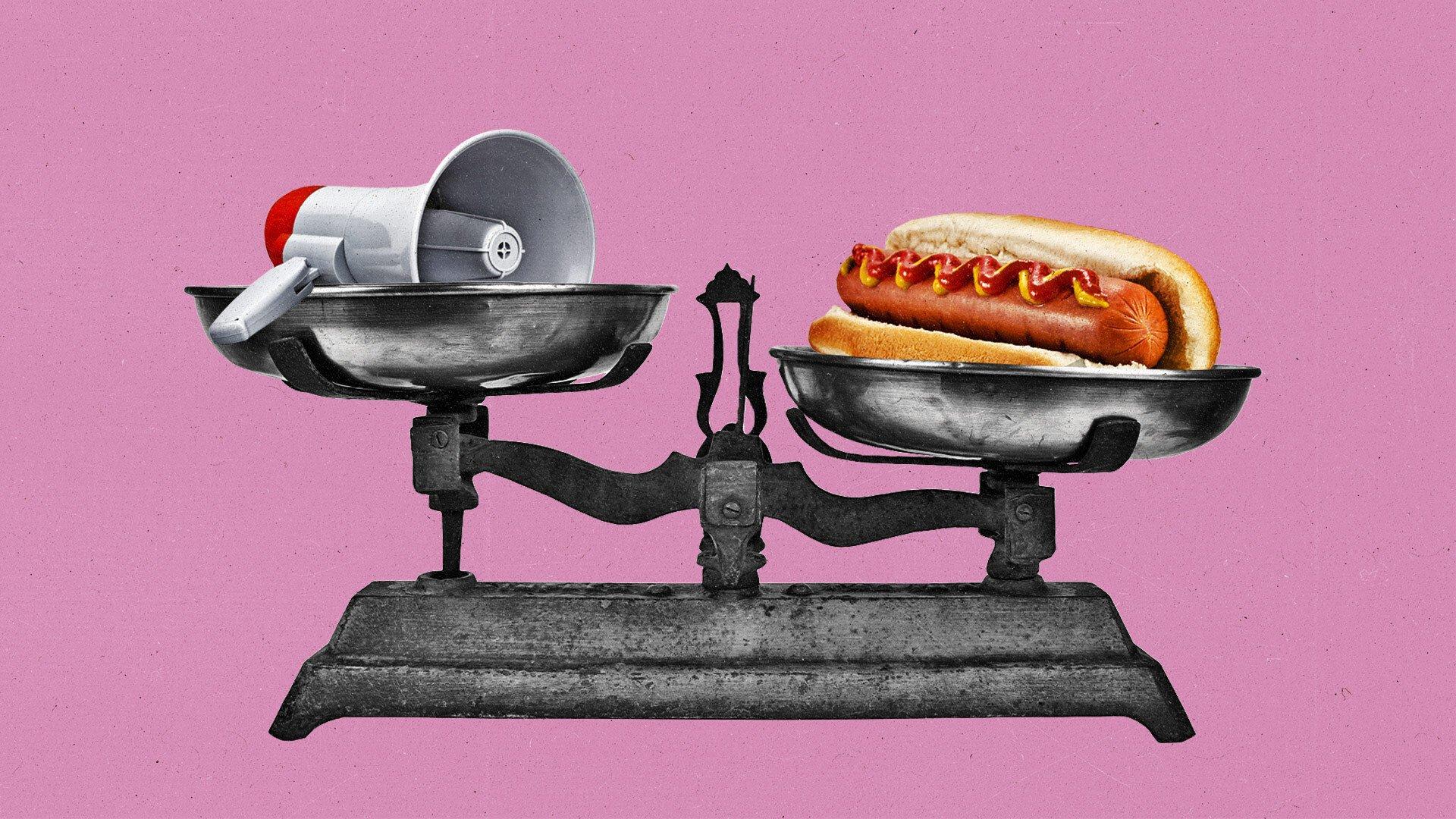Brands emphasize value amid record inflation

Illustration by Sarah Kim / Shutterstock / Getty / The Current
The highest inflation rate in decades has many consumers more price-conscious, and brands have had to adjust accordingly.
Earlier this month, something many consumers would consider unthinkable happened: Costco, a bastion of consumer value, raised the cost on some of its signature food court items. Costco’s chicken bake increased by $1 in price and soft drinks now cost a whole 10 cents more. For Costco, the price hikes made for headline news, even though the changes are subtle compared to the wider market.
Costco is perhaps one of the most prominent examples of how inflation has rocked the economy in recent months and how brands have had to adjust their marketing strategies, often in unexpected ways, to address our new economic reality.
The consumer price index, a measure of the average cost of consumer goods, increased 9.1 percent this June from the previous year, the highest inflation rate since November 1981. The result has been a decrease in purchasing power for consumers, which creates a unique challenge for marketers: How do you get consumers to buy products when they cost more and many consumers are more budget-conscious?
“We’re seeing a shift to more value-oriented marketing,” Andrew Lipsman, principal analyst for retail and e-commerce at Insider Intelligence, tells The Current.
Brand messaging for budget-wary consumers
So far, marketing responses to inflation have varied by consumer need at this time.
Many brands have sought to pivot by emphasizing how their discounted services can help soften the financial blow of traveling. Travel has been hit hard by inflation, as astronomical increases in gas prices have made car and air travel more expensive for many consumers.
T-Mobile, for instance, announced in June a new suite of features, called Coverage Beyond, that includes free Wi-Fi on planes, high-speed data coverage in more than 200 countries worldwide, and discounts at Shell gas stations.
Fast food chain Del Taco has taken a similar tack, introducing earlier this year a menu of 20 items that cost only $2. “The latter part of last year, obviously inflation was hitting restaurant companies,” Del Taco Chief Marketing Officer Tim Hackbardt told Fortune about the campaign. “We immediately noticed that the majority of our competitors were beginning to abandon that value area. And we thought ‘Wow, that’s a really great opportunity for us because we know how to do that very well for consumers and with inflation.’”
Canadian pizza chain Pizza Pizza created a campaign for fixed-rate pizza, likely a marketing tactic to aid their customers in combating inflation. Customers can answer a survey to get preapproved for the deal. For the next year, all approved customers will lock in the price of a four-topping, extra-large pizza at $16.99.
GoodBuy Gear, an online consignment shop for baby and kid items, has seen activity on its platform increase amid inflation, according to GoodBuy Brand Communications Lead Maddy McLean. The company has continued its ad spending to target parents either looking to save money on items for their kids or supplement their incomes by selling used items in a shaky economy.
“We’re able to bring in new customers who may not have been as concerned about saving extra money on items for their children until recently, and those who have shopped or sold with us previously are more likely to come back,” McLean says.
The common thread among all these brands is they all appear to be viewing inflation as an opportunity to think differently, a strategy many measurement executives applaud.
Subscribe to The Current
Investing in marketing despite an uncertain economy
It’s natural to assume that brands would pull back on media spending during times of economic uncertainty, but experts say reducing marketing efforts can have negative long-term effects on a brand.
“Brands should continue investing in brand equity,” says Leslie Lee, SVP of marketing at Vistar Media, an out-of-home advertising network. “Research shows that companies that neglect to invest in brand-building see a decline in base sales every year. They need to balance strong emotional messaging with targeted relevance for specific product promotions and action-driven messages.”
Indeed, many brands are thriving despite concerns about the economy. Worries about inflation don’t seem to have upset the annual spike in beer sales during the summer, as Molson Coors, Constellation Brands, and Anheuser-Busch InBev all posted positive earnings this year, despite raising prices. Luxury spending, too, is up from previous years.
The confusing mix of economic signals — sky-high inflation and threat of a recession, but a strong jobs market — has created uncertainty for many marketers, but Lipsman remains optimistic.
“The consumer economy is still strong and robust, and that’s a function of the strong job environment,” he says. “There is still money in people’s pockets. They still have the ability to spend. They just want to be smarter about it.”